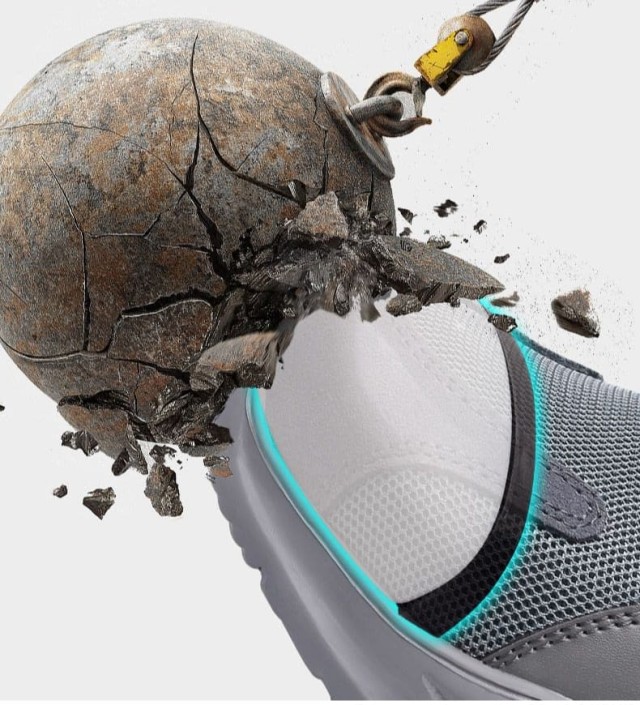When seconds count and hazards loom, emergency responders need footwear that keeps pace with their mission. Composite toe boots have emerged as the gold standard for roles demanding both protection and agility—offering OSHA/ASTM-compliant safety without sacrificing mobility. Here’s how these boots address the unique challenges faced by firefighters, EMTs, and security personnel.
Composite Toe Boots in High-Pressure Environments
Lightweight Design and Fatigue Reduction
Traditional steel toe boots can weigh significantly more than composite alternatives, leading to leg fatigue during long shifts. Composite materials like Kevlar or carbon fiber replicate the protective qualities of steel while reducing weight by approximately 30–50%. For responders navigating stairwells or uneven terrain, this translates to:
- Faster movement: Less energy expended per step improves response times.
- Reduced muscle strain: Lighter footwear minimizes long-term joint stress.
Did you know? Research shows that reducing footwear weight by just 100 grams can decrease oxygen consumption by 1% during prolonged activity—a critical factor for firefighters carrying heavy gear.
Non-Conductive Safety in Hazardous Settings
Unlike steel, composite materials are inherently non-conductive, protecting wearers from electrical hazards. This is vital for:
- Firefighters working near downed power lines.
- EMTs using defibrillators or other medical equipment.
- Airport crews operating in fuel-heavy environments.
OSHA Standard 1910.136 mandates electrical hazard protection in such settings, a requirement seamlessly met by composite toe designs.
Compliance with Industry Regulations
Composite toe boots meet ASTM F2413-05 standards for impact resistance (75 pound-force) and compression protection, identifiable by the "I" rating on compliant footwear. These boots also avoid triggering metal detectors—an advantage for airport security teams requiring seamless access to restricted zones.
Real-World Applications in Emergency Response
Case Study: Firefighting Teams and Mobility
During multi-alarm fires, firefighters need to climb ladders and maneuver through debris quickly. Composite toe boots have been adopted by urban fire departments for their:
- Heat resistance: Materials like thermoplastic withstand high temperatures without transferring heat to the foot.
- Flexibility: Lighter soles improve balance on unstable surfaces.
EMTs and Airport Security Efficiency
For EMTs, every second saved during patient extraction can impact survival rates. Composite toe boots enable:
- Quicker kneeling/bending: Reduced weight aids rapid transitions.
- Silent movement: Critical for security personnel conducting surveillance.
Upgrade Your Safety Gear with 3515’s Composite Toe Solutions
Whether you’re equipping a firehouse or sourcing bulk orders for security teams, 3515 delivers rigorously tested composite toe boots that align with OSHA/ASTM standards—ensuring protection without compromising performance. Discover how our manufacturing expertise can support your mission.
Key Takeaways:
- Composite materials offer steel-toe-level protection at half the weight.
- Non-conductive properties meet electrical safety requirements.
- ASTM F2413-05 compliance ensures impact resistance up to 75 lbf.
Related Products
- Customizable Anti-Smash Safety Boots for Wholesale & Private Label Manufacturing
- Wholesale Leather Safety Boots with Customizable Protective Toe
- Wholesale Durable Safety Boots Manufacturer Customizable Steel Toe Work Boots
- Wholesale Customizable Safety Boots Durable & Protective Footwear Manufacturing
- Durable Steel Toe Safety Boots Wholesale & Custom Manufacturing
Related Articles
- How to Reduce Foot Injury Risks in High-Risk Workplaces: 3 Proven Strategies
- How to Choose Safety Footwear That Solves Steel Toe Shoe Problems Without Sacrificing Protection
- How Steel Toe Shoes Meet Safety Standards and Prevent Workplace Injuries
- Steel Toe Work Boots: Balancing Safety and Comfort for Demanding Jobs
- Matching Men’s Work Shoe Safety Technologies to Workplace Hazards




















